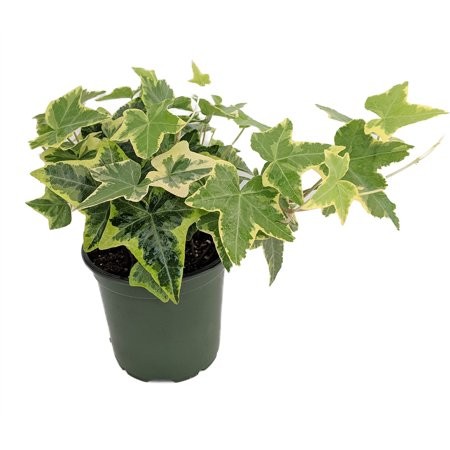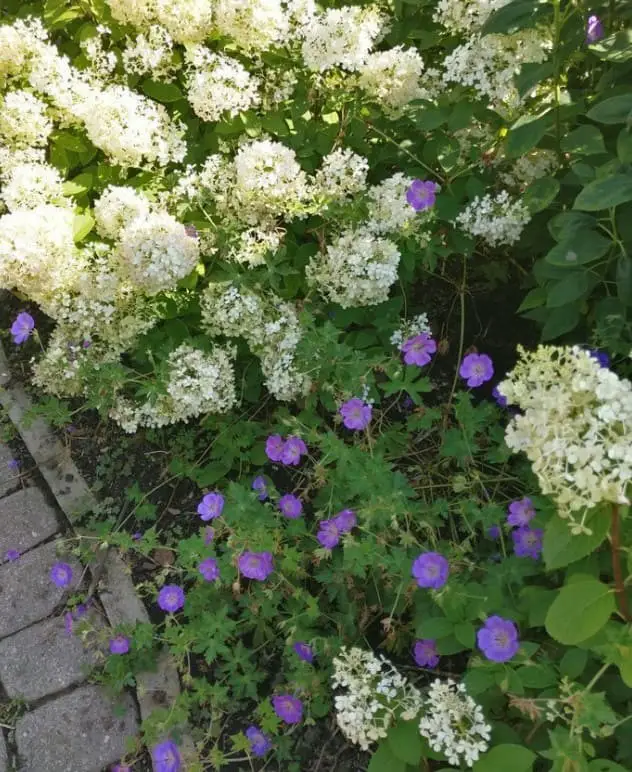24 Best Plants That Repel Deer And Rabbits: 2024 Guide
Got tired of seeing your garden become a snack bar for rabbits or deer? It’s frustrating to watch your hard work get destroyed. The good news is that nature has its own pest control, and we can use it to our advantage. By incorporating plants that repel these critters into your garden design, you’ll not only protect your petunias but also create a sustainable and stunning space.
This approach is kind to the environment, eliminates the need for harsh chemicals or unsightly fences, and sets up a garden that’s less inviting to Bambi and Bugs Bunny’s cousins. In this article, we’ll explore why certain plants repel deer and rabbits, how they work, and which ones to choose for your own garden. We’ll also discuss key characteristics of repellent plants, zone and climate compatibility, and aesthetic considerations for a beautiful and functional garden design.
Understanding Deer and Rabbit Habits
It’s a familiar scenario: you’ve spent hours tending to your garden, watching the flowers bloom and the vegetables grow. Just as everything seems perfect, deer and rabbits suddenly appear out of nowhere, leaving a trail of destruction in their wake. But why do they target our gardens with such gusto? Let’s explore what drives these critters’ behavior and what we can do to deter them from raiding our green spaces.
Quick Facts About Deer and Rabbit Feeding Habits
While deer and rabbits may seem harmless with their cute faces, they can become a gardener’s worst nightmare. These furry critters have no discerning palate and will devour anything green that crosses their path when hunger strikes. Interestingly, their snacking habits differ slightly, making some plants more vulnerable to damage than others.
For instance, deer tend to feast on hostas and roses during dusk and dawn hours, while rabbits opt for lettuce and carrots under the cover of night or early morning.
Why Certain Plants Repel Them
When it comes to plants that repel deer and rabbits, it’s all about the sensory experience. Certain plants possess strong scents or tastes that can deter these herbivores from feeding on them. Similarly, plants with tough or furry textures may also be unappealing to deer and rabbits, much like a finicky diner might turn down a dish that doesn’t meet their standards. These picky eaters won’t hesitate to move on if the plant doesn’t satisfy their cravings.
The Difference Between Deer-Resistant and Rabbit-Resistant Plants
While it’s true that some plants are deer-resistant, what’s often overlooked is that not all plants that deter deer will also discourage rabbits. Similarly, certain plants may be irresistible to rabbits but unappealing to deer. To better understand the preferences of these wildlife visitors, consider the following breakdown: Aromatic herbs, for instance, might be a hit with deer while leaving rabbits indifferent.
Thorny bushes can be a deterrent for deer, but their appeal may vary when it comes to rabbits. Fuzzy leaves, on the other hand, could be a draw for both deer and rabbits. By recognizing these differences, you’ll be better equipped to create a garden that’s less appealing to uninvited critters and more inviting to your own green thumb. With this knowledge, you can effectively keep your outdoor space thriving and animal-free.
Key Characteristics of Repellent Plants
When it comes to keeping pesky deer and rabbits at bay, the secret to a successful garden lies not in elaborate fencing or repellents, but rather in the subtle yet potent properties of certain plants. The key to understanding this phenomenon lies in the trifecta of factors that repel these unwanted visitors: smell, taste, and texture.
By introducing a diverse range of plants with unique profiles into your garden, you can create a natural barrier against these pests, allowing your favorite flowers and vegetables to thrive without fear of being munched on.
Overview of Common Characteristics
Plants have evolved unique characteristics to deter herbivores like deer and rabbits from feasting on them. One effective strategy is to employ strong, pungent scents that overwhelm the animals’ senses, making it difficult for them to detect their preferred snacks. Certain plants, such as lavender and rosemary, exhibit this bold smell, rendering them unappealing to these critters.
Another approach is to introduce bitter tastes into the plant’s makeup, much like a dish that might not be everyone’s cup of tea. Marigolds and daffodils are notable examples of plants with bitter taste profiles that would likely deter deer and rabbits from munching on them.
Finally, some plants have developed fuzzy textures that, when encountered by herbivores, might evoke a sense of discomfort or unease.
Lamb’s ear and dusty miller are two plants that feature this characteristic, making it uninviting for deer and rabbits to attempt to consume them.
Why Incorporating a Variety of These Plants Can Be Beneficial
When cultivating a robust and resilient garden, incorporating a diverse range of green warriors is crucial. By introducing a mix of plants that cater to the unique preferences of deer and rabbits, you can effectively deter these pests from targeting your garden. These unwanted visitors are often drawn to what they perceive as an all-you-can-eat buffet; however, by offering them a medley of flavors and textures, you can shift their attention elsewhere.
The benefits of diversity in plant choices are threefold:
* Sensory Overload: A garden that offers a cacophony of smells and textures can overwhelm pests, making your garden an unappealing target.
* Seasonal Protection: As different plants bloom at various times throughout the year, you can enjoy year-round protection from these pesky critters.
* Aesthetic Pleasure: Let’s not forget the visual appeal of a garden that boasts a diverse range of plants – it’s a true feast for the eyes.
Top Plants That Repel Deer and Rabbits
When it comes to safeguarding your garden from deer and rabbits, it’s crucial to understand that all plants are not equally effective. Some species possess natural deterrents that repel these critters, earning them the title of ‘garden heroes.’ These unsung champions may lack aesthetic appeal, but they’re essential for keeping unwanted visitors at bay.
Let’s take a closer look at a few such plants that deserve a spot in your garden, providing you with the perfect defense against Bambi and Thumper’s insatiable appetites.
Ageratum
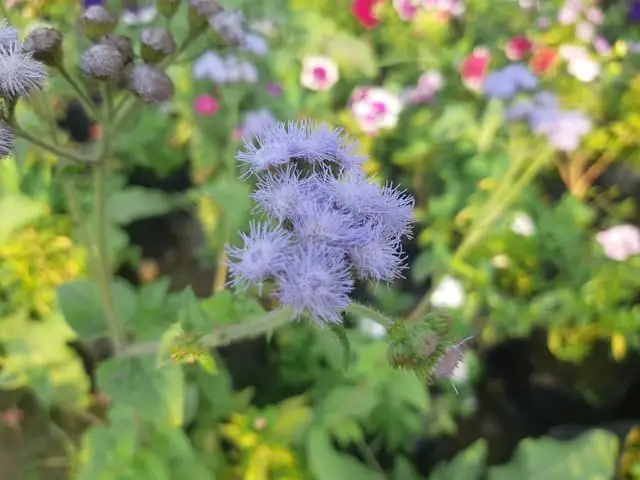
Ageratum’s fuzzy blue flowers may initially catch your eye, but this versatile plant has a clever trick up its sleeve. Its unique scent is unappealing to deer and rabbits, making it an effective deterrent against common garden pests. This adaptable plant can thrive in full sun or partial shade, allowing you to place it strategically throughout your garden. Additionally, its low-growing habit makes it an ideal choice for border planting, providing a natural barrier against unwanted visitors.
Alyssum
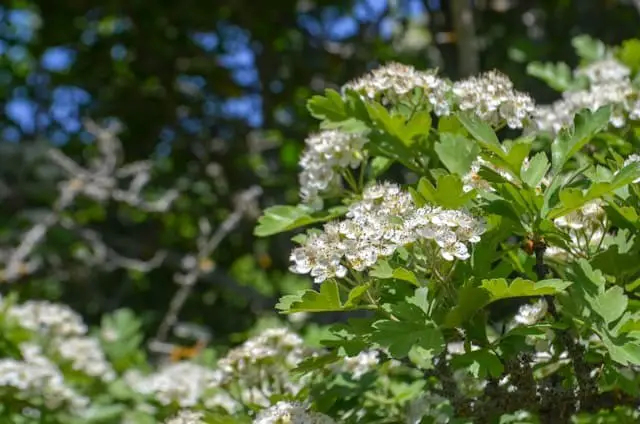
The alluring scent of alyssum, with its delicate white, purple, or pink blooms, might initially capture our attention. However, to wildlife such as deer and rabbits, this low-growing herb is an unwelcome obstacle. Despite its sweet aroma, alyssum’s hardy and drought-resistant nature makes it an ideal filler plant for gaps in the garden, creating a fragrant barrier that effectively discourages unwanted visitors, silently communicating ‘move along’.
Anemone
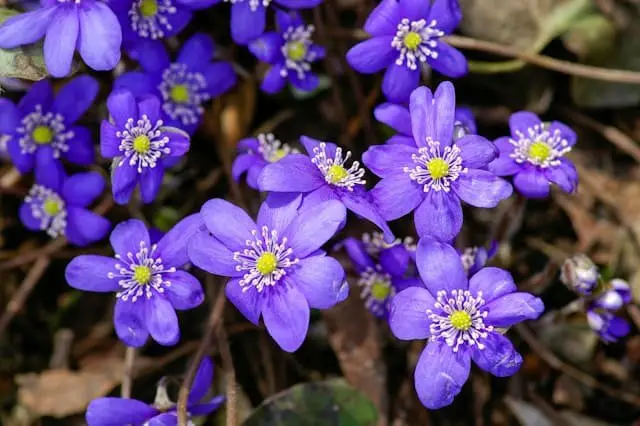
Whimsy meets resilience in the garden with anemone, also known as windflower. Its dainty blooms bring a touch of magic, but don’t let their fragile appearance deceive – this hardy plant is a pest’s worst nightmare. Deer and rabbits tend to steer clear of anemones, possibly because they’re not impressed by its charm or simply because it doesn’t live up to its looks in terms of flavor.
Whatever the reason, anemone is an excellent choice for adding a pop of color without becoming a buffet for local wildlife.
Astilbe
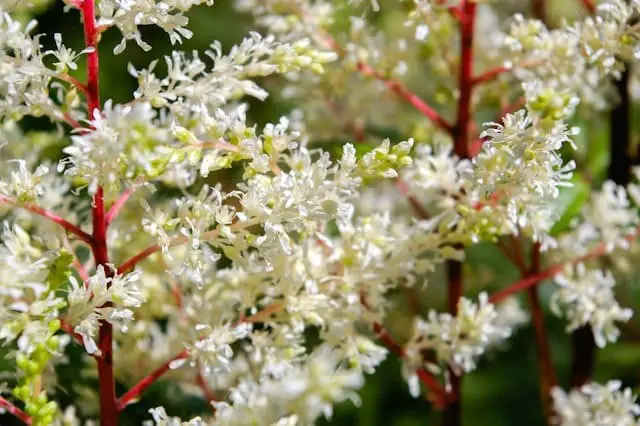
When dealing with shaded areas in your garden, Astilbe is an excellent ally to have on your side. This versatile perennial boasts delicate, feathery plumes that come in a range of colors, from pure white to soft pink and vibrant red. Its lacy foliage also provides year-round interest, adding a touch of elegance to the darkest corners of your outdoor space.
What’s more, Astilbe has the added benefit of being unappealing to deer and rabbits, making it an ideal choice for gardeners looking to add texture and color without providing a feast for unwanted visitors.
Barrenwort
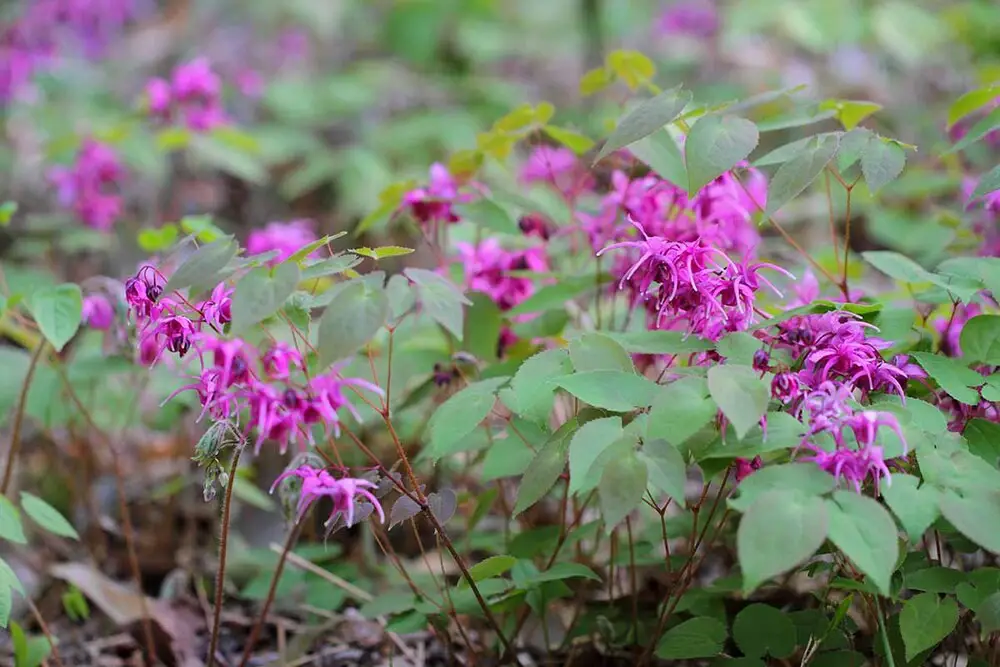
In conclusion, Barrenwort (Epimedium) is an exceptional groundcover that offers a trifecta of benefits. Its unique heart-shaped leaves and dainty flowers bring a touch of sophistication to shady areas, while its resistance to deer and rabbit damage makes it an ideal choice for gardeners concerned about these common pests. Furthermore, once established, Barrenwort proves remarkably drought-tolerant, rendering it a low-fuss option perfect for busy or forgetful gardeners alike.
Beebalms
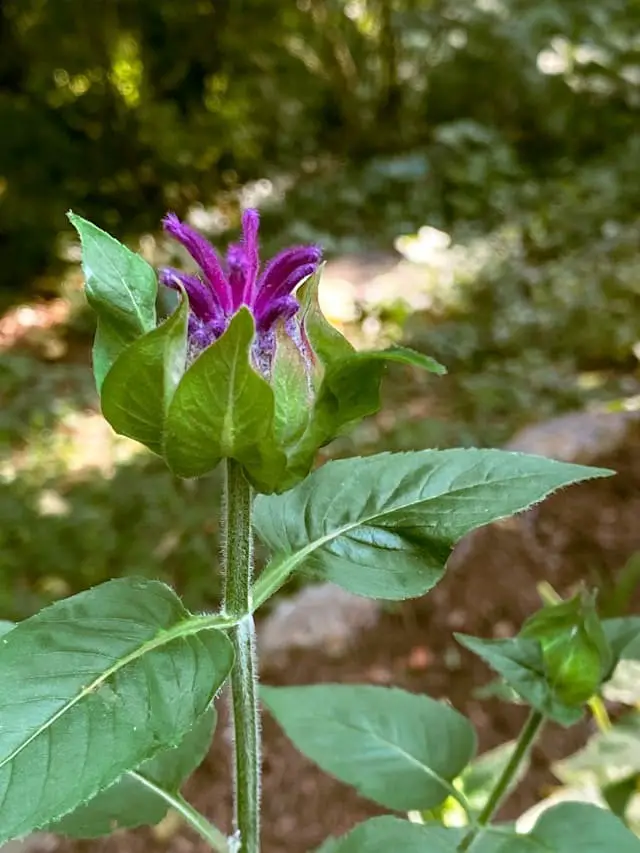
Beebalms are the ultimate life of the garden party, boasting vibrant flowers that burst with colors like pink, red, and purple. But what truly sets them apart is their extraordinary ability to attract a diverse range of pollinators, including bees and butterflies, without demanding much attention or maintenance. Perhaps it’s the strong, pungent aroma or the slightly bitter taste that deters deer and rabbits from feasting on these flowers.
As a result, Beebalms often remain untouched, allowing gardeners to enjoy their beauty without worrying about them being nibbled away. When planted in sunny spots, these flowering wonders will spread their joy and add a pop of color to your garden landscape.
Bleeding Heart
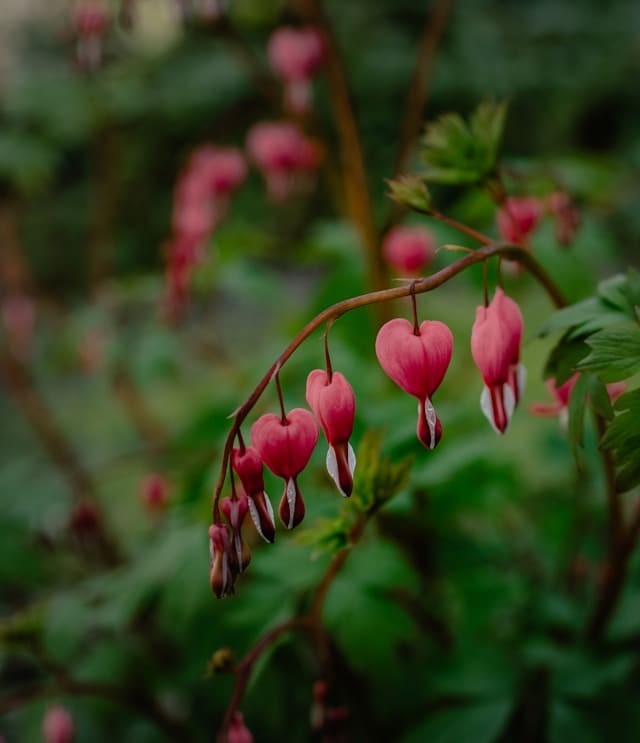
In gardens, the Bleeding Heart plant is a romantic gem that adds a touch of whimsy and charm. Its unique heart-shaped flowers are suspended from arching stems, creating a delicate, lacy effect that’s simply enchanting. As if this weren’t enough, the plant also boasts natural defenses against deer and rabbits, which seem to instinctively avoid its toxic properties.
This shade-loving perennial thrives in areas where other flowers might struggle, making it an ideal choice for adding a pop of color to those often-neglected corners of your garden.
Boxwood
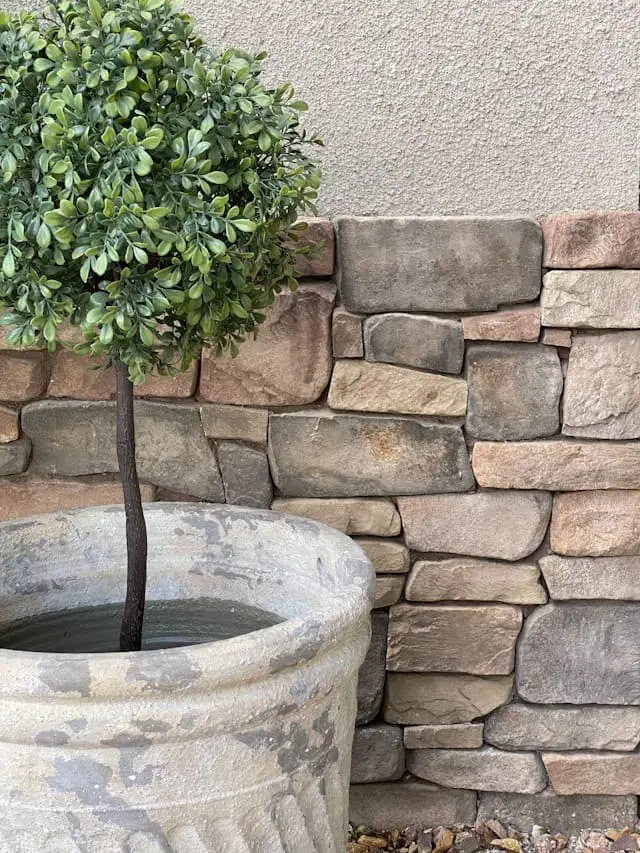
Boxwood serves as the dependable foundation of many gardens, boasting dense evergreen foliage that can be artfully shaped for hedges and borders. Though it’s a gardener’s delight for creating structure, deer and rabbits often express disinterest in this durable shrub. Its unpalatable flavor and robust leaves likely act as effective deterrents, making Boxwood an ideal selection for gardeners seeking to introduce formality and protection to their outdoor spaces.
Butterfly Bush
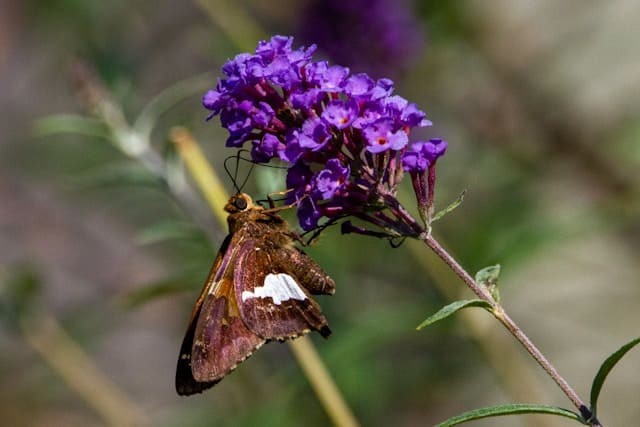
Butterfly Bush earns its reputation as an irresistible magnet for butterflies and other pollinators, while also boasting remarkable resistance to deer and rabbit damage. Its rapid growth rate allows it to quickly add vibrant color and life to any garden bed, featuring large, conical clusters of flowers in a range of hues including purple, pink, white, and yellow. Moreover, its unappealing nature to common garden pests makes it a prized addition to any outdoor space.
Catmint
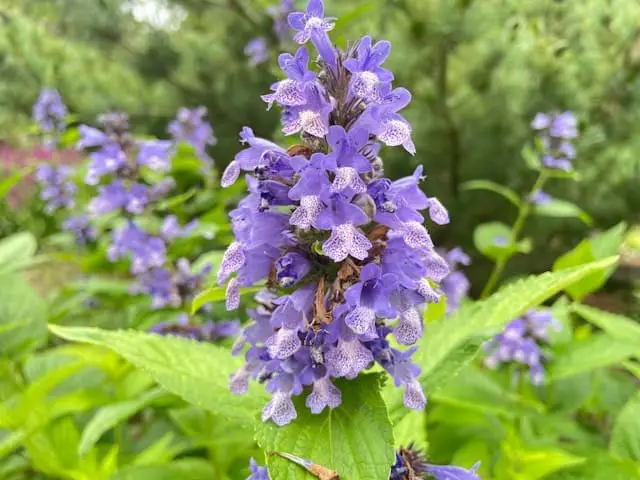
In the world of gardening, catmint is a true unsung hero. Its soft, lavender-blue blooms and fragrant foliage are a potent deterrent against deer and rabbits, keeping these pesky critters at bay. This hardy perennial has earned its stripes as a reliable performer, thriving in dry conditions once established and producing a stunning display of color from late spring to early fall.
With its adaptability to sun-drenched spots and borders alike, catmint is the perfect addition to herb gardens or any outdoor space where you crave a dash of effortless elegance.
Coneflower
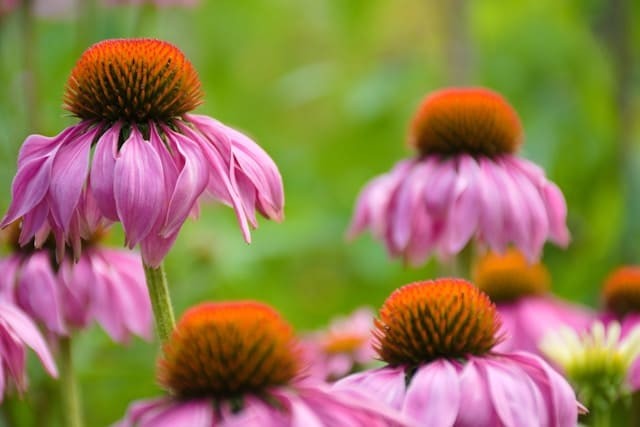
Coneflower, or Echinacea, is a remarkable plant that embodies both resilience and loveliness. Its striking, daisy-like blooms in shades of pink, purple, white, and yellow make a statement against the lush greenery of its foliage, but it’s not just a pretty face – it also defies deer and rabbit predators with equal aplomb. Beyond its visual appeal, Coneflower is a haven for butterflies and bees, making it an invaluable asset to the garden’s ecological balance.
Daffodil
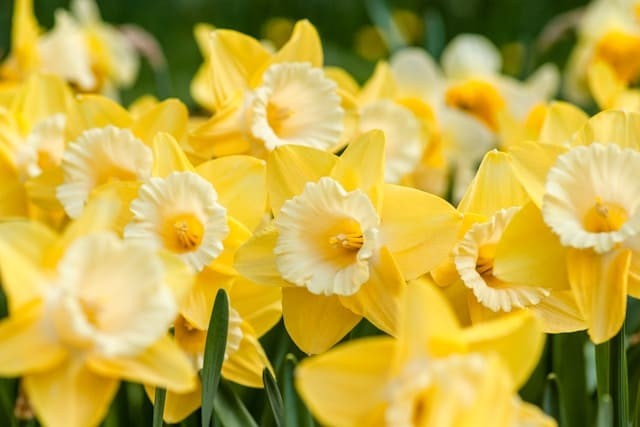
As the seasons awaken from their winter slumber, spring gardens burst forth with vibrant color courtesy of the stalwart Daffodils. These perky flowers not only mark the arrival of warmer days but also boast an impressive ability to deter deer and rabbit grazers due to their naturally occurring toxic alkaloids. This unique characteristic allows them to thrive without being devoured, permitting them to self-sustain and return year after year with remarkable consistency.
As such, Daffodils are perfectly suited for naturalizing in lawns, beneath tree canopies, or within formal flower beds, where they’ll add a pop of cheerful color to any setting.
Dusty Miller
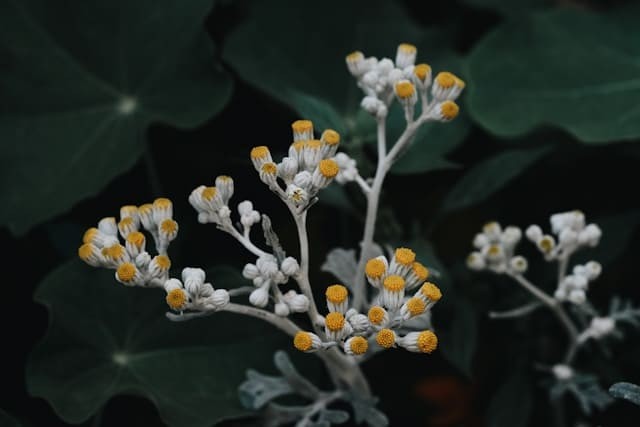
The Dusty Miller plant boasts an unmistakable charm with its silvery-gray foliage providing a striking contrast in the garden, both aesthetically pleasing and texturally intriguing. Its unappealing nature to deer and rabbits, attributed to its fuzzy leaves and bitter taste, adds an extra layer of protection for gardeners seeking low-maintenance options.
As a versatile plant, it can be utilized as a stunning backdrop for vibrant annuals and perennials or crafted into visually striking borders and edgings, offering endless possibilities for creative expression in the garden.
Euphorbia
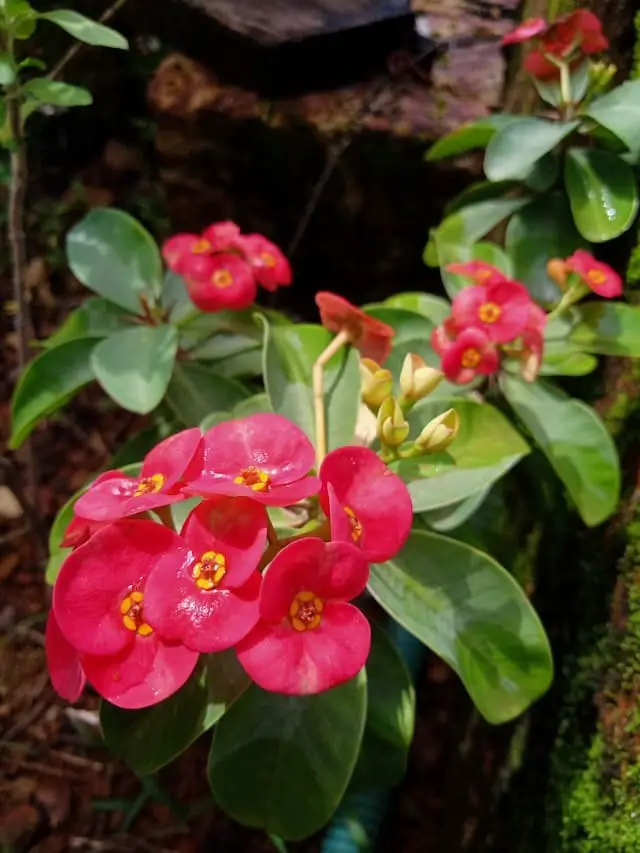
Euphorbia is a plant that defies convention with its unique shapes and textures. While its milky sap has a reputation for causing skin irritation and being toxic if ingested, it’s no surprise that deer and rabbits steer clear of this uninviting specimen.
This diverse genus offers a range of options to suit various garden designs, from perennial borders to rock gardens.
With its remarkable resilience and striking appearance, Euphorbia makes a bold statement in the garden without attracting unwanted wildlife visitors.
Foxglove

Foxglove’s striking appearance, characterized by its tall spires adorned with bell-shaped flowers in a kaleidoscope of colors including purple, pink, white, and yellow, is sure to captivate. But what sets this perennial apart is its toxic nature, which serves as a natural deterrent against deer and rabbits. Foxglove thrives in partial shade, making it an ideal choice for woodland gardens or shaded borders.
Despite being a biennial, planting Foxglove at regular intervals can ensure a steady supply of blooms from year to year.
Iris
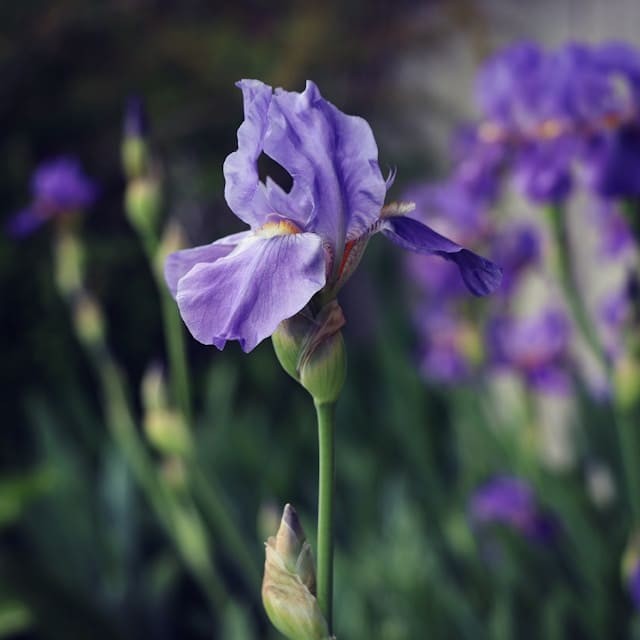
Iris boasts an array of striking blooms and refined foliage, offering a kaleidoscope of colors and forms that effortlessly complement any garden landscape. This resilient genus has a notable advantage over other plants, as it is largely disregarded by deer and rabbits due to its slightly bitter taste and robust, fibrous leaves. While aesthetic appeal is certainly one of iris’s greatest strengths, its durability is equally impressive.
These versatile flowers can not only thrive in sunny borders but also flourish in water gardens, making them a staple for any discerning horticulturist.
Lavender
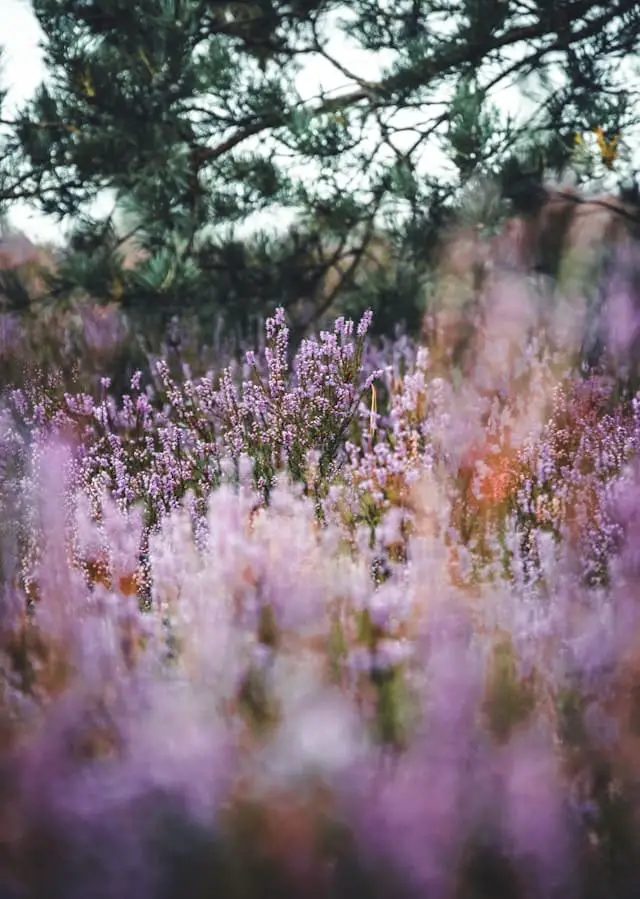
While many people adore the calming aroma of lavender, it’s not a popular choice among deer and rabbits. In fact, these furry creatures tend to avoid this fragrant herb altogether. This is due in part to lavender’s potent essential oils, which repel many common garden pests, making it an excellent companion plant for any garden. But lavender’s charm doesn’t stop there.
Its stunning purple blooms and silvery-green foliage can greatly enhance the sensory experience of a garden, adding visual interest and texture to any outdoor space.
Marigolds
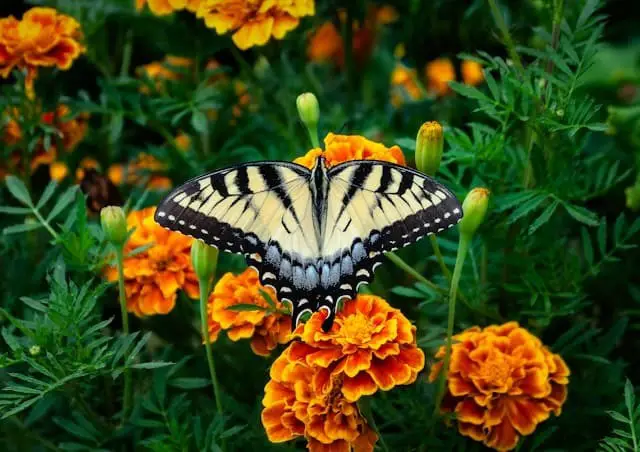
With their vibrant orange, yellow, and red petals, marigolds radiate warmth and energy, much like the sun’s radiant beams illuminating gardens. Beyond their stunning visual appeal, these annuals possess a potent defense mechanism – their pungent aroma serves as a natural repellent to deer and rabbits, making them an excellent companion plant for more delicate flora.
Moreover, marigolds are remarkably easy to cultivate and can flourish in full sun, providing a cheerful yet effective barrier against unwanted garden pests.
Peony
The majesty of peony blooms is a feast for the eyes, with their soft pinks, deep reds, and pure whites unfolding like a canvas of beauty. But beyond their visual allure, these flowers possess an unexpected advantage – they are largely unappealing to deer and rabbits. It’s thought that this is due in part to the thick foliage that provides shelter for ants, which often congregate on the buds.
By incorporating peonies into your garden design, you can not only add a touch of sophistication but also ensure your plants remain safe from unwanted nibbles.
Rosemary
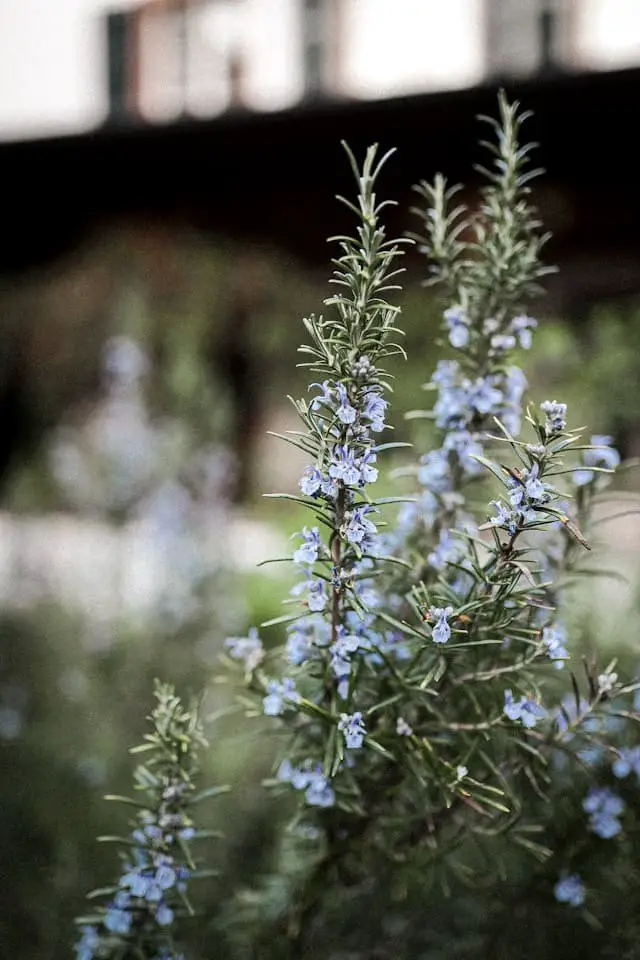
Rosemary is a versatile and resilient herb that doubles as a culinary delight and a valuable asset in the garden. Its pungent oils are unappealing to many pests, making it an excellent ally in maintaining a healthy and balanced ecosystem. This perennial herb has the ability to grow into a dense, woody shrub that provides year-round foliage and natural protection for your garden.
Rosemary’s low-maintenance requirements, including its tolerance of drought and love for sunlight, make it an ideal choice for gardeners seeking to add flavor, fragrance, and fortification to their outdoor spaces.
Russian Sage
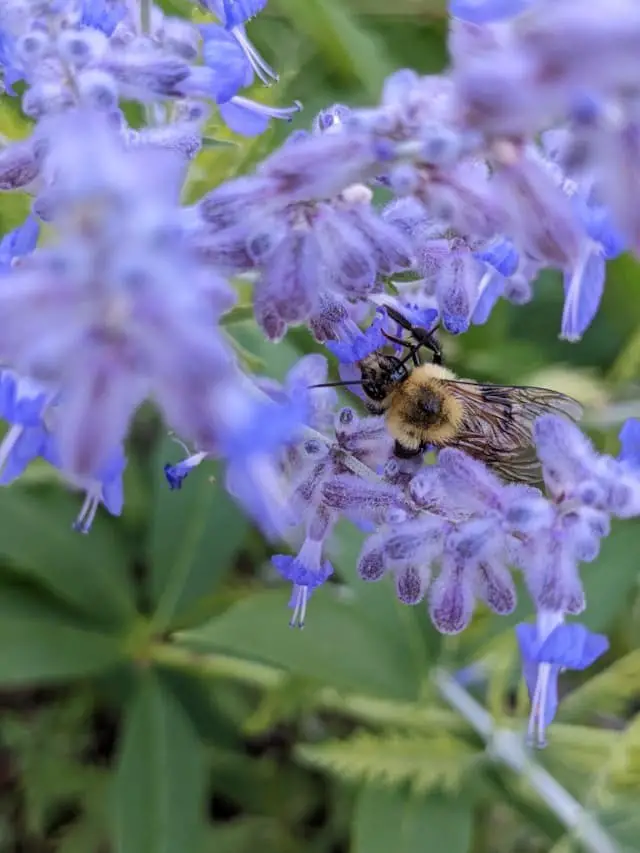
Russian Sage’s delicate lavender-blue blooms and silvery leaves create a stunning visual display that can withstand the challenges of deer and rabbit invasions. This hardy perennial is uniquely adapted to thrive in full sun, making it an ideal choice for adding depth and drama to perennial borders or xeriscaped areas. Its remarkable drought tolerance only adds to its allure, allowing it to flourish with minimal watering, making it a low-maintenance yet high-impact addition to any garden.
Salvia
Salvia’s kaleidoscope of colors, spanning from rich purples to blazing reds, is a sight to behold. This vibrant herb not only attracts pollinators such as bees and butterflies but also boasts aromatic foliage that serves as a natural deterrent against deer and rabbits. As a dual-purpose plant, salvia effortlessly combines aesthetics with functionality, beautifying gardens while safeguarding them from unwanted pests.
When planted in full sun, salvia’s resilient nature and vivid blooms can dramatically elevate garden beds, borders, and containers, adding a pop of color and vibrancy to any outdoor space.
Snapdragon
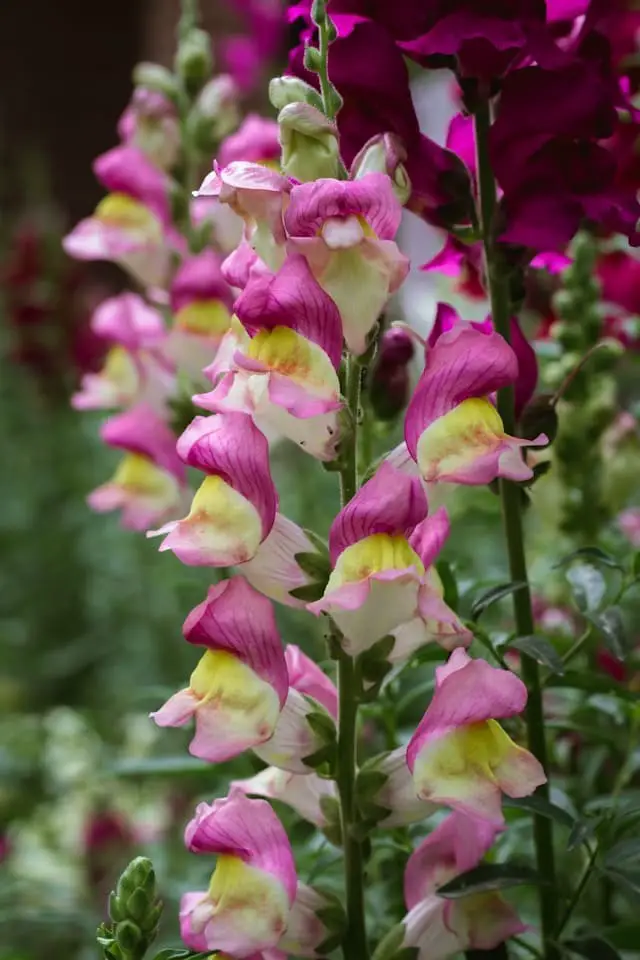
Snapdragons inject a whimsical touch into the garden with their statuesque stems boasting vibrant blooms that can flexibly open and close like tiny mouths when gently manipulated. This unique characteristic has captivated the hearts of both children and adults, yet deer and rabbits tend to overlook these annuals in favor of more palatable options.
Snapdragons thrive in cooler climates, making them an ideal selection for spring and fall gardens where they can soak up the milder temperatures and bloom with reckless abandon.
Yarrow
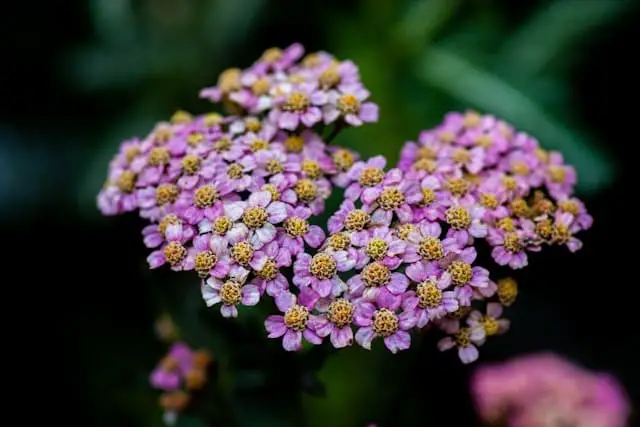
Yarrow’s charm lies in its unique combination of flat-topped clusters of small, yet vibrant flowers and delicate fern-like foliage, allowing it to seamlessly blend into various garden settings. This perennial offers numerous benefits, including impressive drought-resistance and an unappealing aroma that deters deer and rabbits from feasting on its leaves. As a result, yarrow is an excellent choice for use as a ground cover or a pop of color in borders and wildflower gardens.
Considerations for Choosing Repellent Plants
While not all plants are deer- and rabbit-resistant, you can still create a thriving and protected garden by choosing the right repellent plants. To make an informed decision, consider three crucial factors: ensuring compatibility with your local zone and climate, providing continuous protection against these pests, and maintaining aesthetic harmony in your garden design.
Zone and Climate Compatibility
When selecting plants to defend your garden from deer, it’s crucial to consider not only the deer’s preferences but also the climate and hardiness zone you’re in. A plant that’s unappealing to deer might still struggle or even perish if it’s not suited for your local conditions. To ensure a harmonious coexistence between your plants and their environment, check the USDA Hardiness Zone rating of each plant against your own local conditions.
For instance, if you live in USDA Zone 7 with full sun and moderate moisture, consider plants like lavender (5-9) that thrive in those conditions, or rosemary (7-10), which can tolerate dry to medium moisture. Make sure the plants you choose can handle both deer resistance and your local climate to keep them healthy and thriving.
Planting for Continuous Protection Throughout the Seasons
When it comes to keeping deer and rabbits at bay, it’s not just about installing a fence or two. A crucial aspect of maintaining a secure garden is planting for continuous protection. By selecting flora that offers a constant presence throughout the seasons, you can ensure there’s always something between your garden and those pesky visitors. In the spring, daffodils are an excellent choice.
Not only do their early blooms signal the start of a new season, but they’re also toxic to deer and rabbits, providing a natural deterrent. As summer rolls around, lavender is another great option. Its aromatic scent repels pests while also being drought-resistant, making it perfect for hot and dry weather conditions. When fall arrives, marigolds are a bright and cheerful addition to your garden.
Not only do they provide a pop of color, but their pest-repellent scent also keeps unwanted visitors at bay. And finally, in the winter, evergreen boxwood provides year-round structure and protection for your garden, giving you peace of mind during the cold and dark months.
Aesthetic Considerations for Your Garden Design
In addition to functional considerations, don’t overlook the importance of aesthetics in your gardening endeavor. Your garden serves as a sanctuary, where you can escape the stresses of everyday life and find solace in nature. To achieve this harmonious balance, think beyond just keeping critters at bay – select plants that bring you joy and serenity too. A diverse range of flora can not only repel pests but also enhance your outdoor space’s visual appeal.
Consider colors, heights, and textures that complement each other and blend seamlessly with your existing garden design.
The right plant choices for pest control go beyond simply selecting what deer and rabbits dislike. It’s about curating a selection of plants that thrive in your local climate, provide protection throughout the seasons, and align with your personal vision for your garden’s aesthetic.
By keeping these factors in mind, you’ll be well on your way to creating a haven that is both beautiful and resilient.
Implementing a Plant-Based Deterrent Strategy
To create a garden that’s both aesthetically pleasing and uninviting to deer and rabbits requires a thoughtful approach that considers multiple factors. Rather than relying solely on deterrent plants, it’s essential to design a space that’s strategically unappealing to these critters while still meeting your vision for a lush oasis.
This can be achieved by implementing a multi-faceted strategy that incorporates effective plant placement, observation and adaptation, and the importance of diversity in your garden.
Design Tips for Creating an Unappealing Environment for Deer and Rabbits
While creating a deer- and rabbit-resistant garden doesn’t have to mean sacrificing beauty, it does require some strategic planning. By carefully selecting plants and designing your garden layout, you can create an uninviting environment for these unwanted visitors. Here are some design tips to get you started:
Use Repellent Plants as Borders: Plant species like lavender and marigolds around the perimeter of your garden to create a natural barrier that deer and rabbits won’t want to cross.
Layer Your Plantings: Integrate repellent plants throughout your garden in different layers, from ground covers to shrubs. This will make it more difficult for animals to navigate and find their favorite snacks.
Incorporate Hardscaping: Use physical elements like rocks, gravel paths, or decorative fencing to break up the landscape. This will not only add visual interest but also create barriers that deer and rabbits won’t be able to cross.
How to Observe and Adapt Based on Effectiveness
To ensure the success of your garden in the face of deer and rabbit encroachment, it’s essential to regularly monitor its effectiveness. This involves tracking not only the health of the plants you’ve implemented as deterrents but also observing any patterns or weaknesses in their behavior. In essence, keep a close eye on two key factors: the performance of your chosen plants and the behavior of the deer and rabbits themselves.
Firstly, monitor the health of the plants you’ve selected to repel these unwanted visitors. If they’re flourishing without showing any signs of being nibbled or damaged, it’s likely that they’re doing their job effectively. Conversely, if you notice any signs of degradation or consumption, it may be time to reassess and try alternative approaches.
Secondly, pay attention to the behavior of deer and rabbits in your garden. Are they entering through specific areas?
Are there certain plants or sections that seem to be more appealing to them? By gaining a deeper understanding of their habits and preferences, you’ll be better equipped to identify and address any weaknesses in your garden’s defenses.
Finally, be prepared to adapt and evolve your strategies as needed. It may take some trial and error to find the perfect combination of plants and layouts that effectively deter deer and rabbits from your garden.
Don’t be discouraged if things don’t work out as planned initially – simply reassess and adjust your approach accordingly.
The Importance of Diversity in Planting to Ensure Year-Round Protection
Incorporating diversity into your garden’s plant selection is crucial for maintaining a pest-free sanctuary throughout the year. This approach offers several benefits, including…
Complementary Strategies for Enhanced Garden Protection
While a garden featuring deer and rabbit repellent plants provides robust protection, there may be times when additional measures are necessary to deter our furry friends from snacking on the greens. Complementary strategies offer a powerful way to reinforce your plant-based defenses, creating a comprehensive system that seamlessly integrates multiple approaches.
Let’s explore non-plant-based methods like fencing and repellent sprays, examining how they can harmoniously coexist with and enhance your plant-based tactics.
Non-Plant-Based Deterrent Methods
While certain plants have a natural ability to repel pests, there are other tactics you can employ to further safeguard your garden. These methods not only complement the repellent properties of specific plants but also offer alternative approaches to deterring deer and rabbits from entering. One strategy involves physical barriers that prevent unwanted visitors from accessing your garden beds.
These fences can be designed to preserve the aesthetic appeal of your landscape while providing an effective barrier against curious critters. Another approach involves using repellent sprays, either chemical or natural, which can be applied as an additional layer of protection during peak growing periods for newly planted or particularly vulnerable species.
Design Tips for Integrating Complementary Strategies
When incorporating these methods into your gardening approach, consider the overall impact on the visual appeal and health of your garden. To strike a balance, follow these guidelines: Harmonizing Fencing: Select fencing that harmonizes with your garden’s design aesthetic. Green mesh or wooden fences can seamlessly integrate with their surroundings, providing protection without compromising the landscape’s natural beauty.
Targeted Spray Application: Apply repellent sprays strategically, focusing on young growth and plants known to be favored by deer and rabbits. Opt for natural and organic spray options that safeguard both your plants and local wildlife from harm.
Observing and Adapting for Effectiveness
A well-designed garden defense strategy is not a one-time achievement, but rather an ongoing process that requires continuous monitoring and adjustment. The key to its success lies in the ability to adapt to changing circumstances.
To maintain the integrity of your defenses, it’s essential to regularly assess their effectiveness. This involves keeping a watchful eye on any areas where deer or rabbits may be breaching your fences or finding ways around your deterrent methods.
If you notice any weaknesses or vulnerabilities, it’s likely time to take corrective action.
Seasonal changes also warrant consideration when developing and implementing your garden defense strategy. As plants grow and mature, their attractiveness to deer and rabbits may shift, requiring adjustments to your deterrent methods. Similarly, changes in weather patterns and temperature fluctuations can influence the feeding habits of these unwanted visitors, necessitating a proactive response.
By staying attuned to the dynamic nature of your garden defense strategy, you’ll be better equipped to protect your plants from damage and maintain a thriving, healthy environment.
The Importance of a Multi-Faceted Approach
To safeguard your garden’s vitality and prevent unwanted visitors from disrupting its harmony, adopt a diversified approach that strikes a balance between coexistence and protection. This equilibrium is achieved by integrating plant-based solutions with physical barriers and repellent measures, creating a dynamic defense system that responds to both the needs of your garden and the habits of local wildlife.
Conclusion
As we conclude our journey into using plants to deter deer and rabbits from your garden, it’s clear that this approach is not only practical but also creative. By harnessing the natural power of certain plants, you can create a harmonious space that welcomes you while discouraging unwanted visitors. This harmony extends beyond simply safeguarding your garden, as it requires working in tandem with nature to foster a welcoming environment for both humans and wildlife.
Experimentation is crucial when cultivating a wildlife-friendly garden, as each plot is unique and what works in one area might not have the same effect elsewhere. Keep an eye on your specific visitors and adjust your approach accordingly. This personalized touch transforms gardening from a hobby into an art form.
Beyond individual success, adopting such practices speaks to a larger ethos of coexistence and respect for nature.
By choosing plants that naturally deter deer and rabbits, you’re not only protecting your blooms and edibles but also promoting balance with the local wildlife ecosystem. This approach reflects a deeper understanding and appreciation for the intricate web of life in our backyards.
As we celebrate the gardeners who see their plots as realms where humans and wildlife can coexist peacefully, let’s create gardens that flourish and inspire, grounded in the wisdom of nature and nurtured by the spirit of kindness and exploration. Let your garden be a testament to the beauty of balance and the power of plants, reminding us that even the smallest actions can have a profound impact on our environment.
Resources for Further Exploration
When embarking on a garden project, navigating the complexities of wildlife deterrence can be a daunting task, even for seasoned green thumbs. For those seeking harmony between their flora and fauna, acquiring knowledge and gaining insight are crucial steps towards success. Whether you’re an experienced gardener looking to refine your approach or a beginner eager to lay a solid foundation, there’s no shortage of resources available to aid in your journey.
From informative articles to trusted websites and local experts, the following suggestions aim to provide a valuable starting point for cultivating a wildlife-friendly garden.
Suggested Readings and Websites
When it comes to designing a garden that coexists with local wildlife, two books stand out as must-reads. Karen Chapman’s ‘Deer-Resistant Design: Fence-free Gardens that Thrive Despite the Deer’ and Tammi Hartung’s ‘The Wildlife-Friendly Vegetable Gardener: How to Grow Food in Harmony with Nature’ offer valuable insights into creating a peaceful relationship between humans and wildlife. For online resources, Gardeners’ World (www. gardenersworld. com) is an excellent starting point.
Their extensive library features articles on plant care, including natural methods for deterring pests. The Spruce (www. thespruce. com) provides in-depth guides on deer- and rabbit-resistant plants, as well as a wealth of gardening tips. National Wildlife Federation (www. nwf. org) takes a holistic approach to wildlife-friendly gardens, offering resources that promote biodiversity while minimizing pest activity.

